I am absolutely entranced by tales of Arctic doom, especially those set in the Victorian era. When I finally read the original book of Frankenstein, I was thrilled by the bleak, frozen setting that starts (and ends) the story. I’ve read dozens of nonfiction books about Arctic and Antarctic explorers, missing ships, and lost expeditions, and adore the frozen imaginings in short stories by Poe and Conan Doyle.
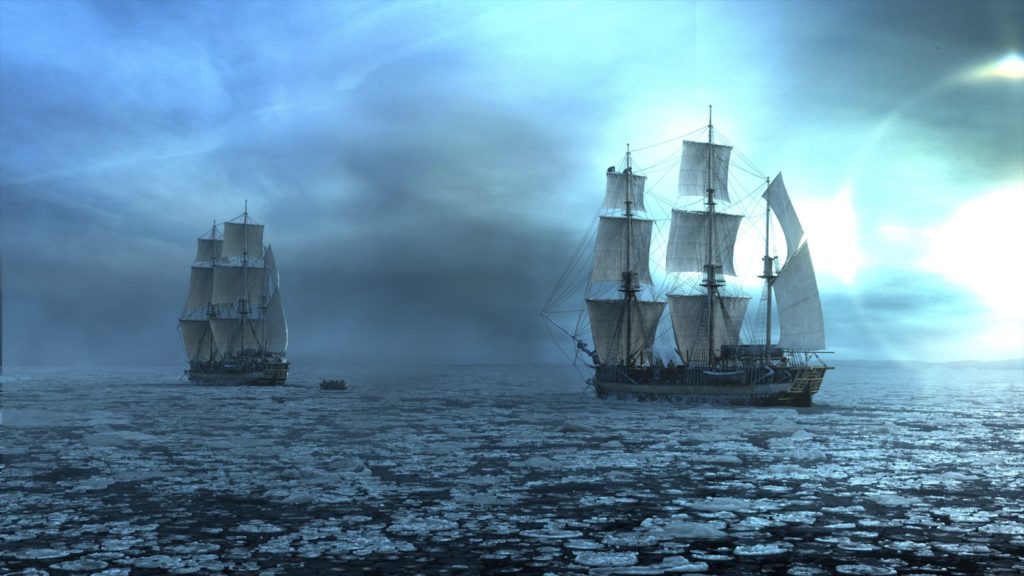
At the time Dan Simmons wrote The Terror in 2007, the final fate of the 1845 Franklin Expedition was still a mystery. Simmons’ book is a fiction, but the characters and initial situations are true. The novel, and the ill-fated real-life expedition, is the basis for the slow (frost)burn that is AMC’s The Terror.
In 1845, the British Admiralty commissioned an expedition through the Arctic in hopes of finding a trade route to the Pacific Ocean, known as the fabled Northwest Passage. Two ships, the HMS Erebus and the HMS Terror, were tasked with plotting a course through the sea ice and around the islands of Northern Canada, seeking a way through to the Bering Strait and beyond. Failing that, the ships would map uncharted areas and return with previously unknown data.
Captain John Franklin, a seasoned sailor and explorer, was given the HMS Erebus and oversaw the entire mission. Captain Francis Crozier helmed the HMS Terror and was second-in-command of the expedition. Both were experienced in survival in extreme conditions and leading men through dangerous situations.
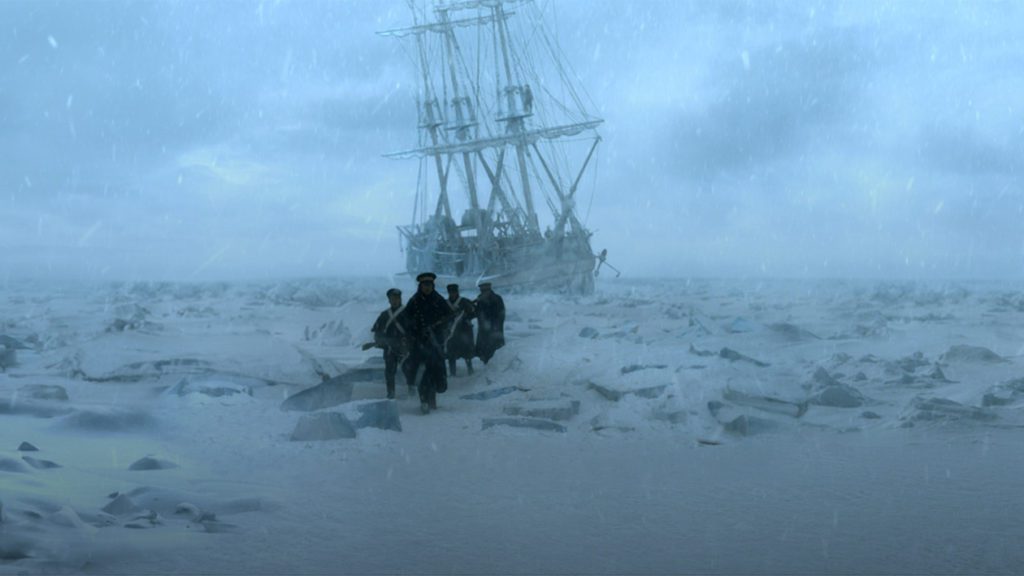
The trip was meant to take two years, so when no one heard from the expedition in 1848, the concern was limited. After all, many similar voyages got stuck in the ice over winters and were delayed or had to find alternate ways back home. Still, the British public and Jane, Lady Franklin, insisted the Admiralty launch a formal search. A reward was offered and rescue operations formal and informal were organized. When the decade turned, with no sightings, many considered the crew lost.
In 1859, a search and rescue expedition found a note, hidden in a stone cairn, which offered some clues on the missing ships. The Victory Point Note, as it came to be called, had two entries. The first, in 1847, noted the locations of the Erebus and Terror and stated that all was well. The second entry was less encouraging. Dated just under a year later, it chronicled the desertion of both ships which had been locked in ice. It confirmed the death of Sir John Franklin, as well as a number of other officers and crew. It seems that they decided to abandon the stuck ships and head over land (and ice) in search of an outpost. Years later, further clues were found that suggested (though didn’t prove) some possible lead poisoning and perhaps cannibalism.
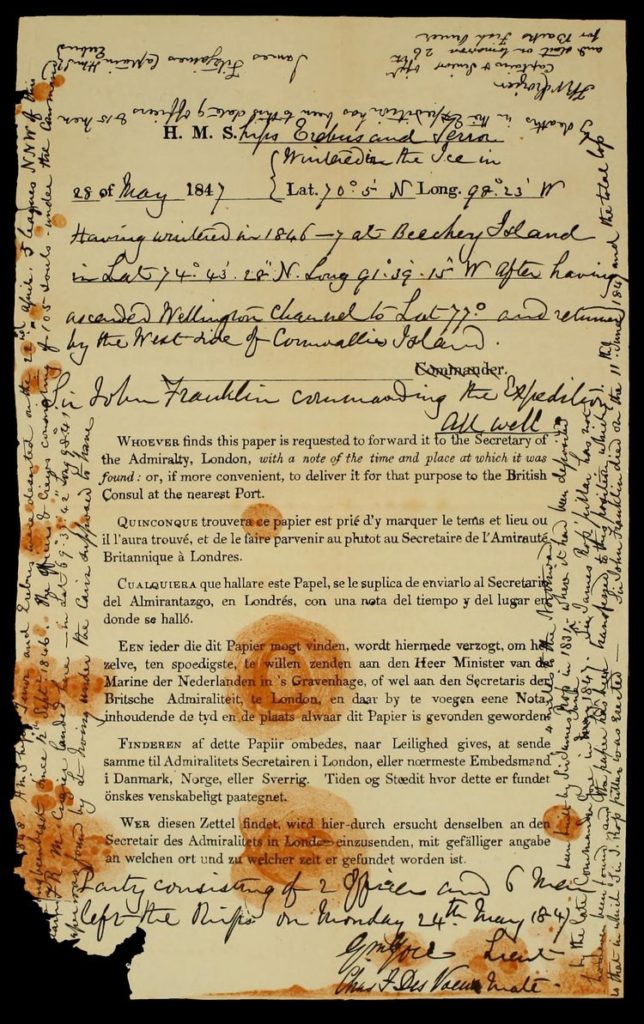
For another 150 years, the fate of the Erebus and Terror remained a mystery. It was in this massive blank page in history that Dan Simmons wrote his epic adventure novel The Terror. For Simmons, the uncertainty of exploration becomes a backdrop for the best and worst of humanity. The extreme situations, the battle for survival, the desire for glory, and the adherence to tradition all meet in the land of the Midnight Sun. Isolation forces people to make choices they would never have to consider otherwise.
The ten-episode adaptation of the novel is an investigation into the darkest depths of the human psyche. It is a slow (frost)burn as the order of an organized expedition slips into something more chaotic. The Terror also adds an element of the supernatural.
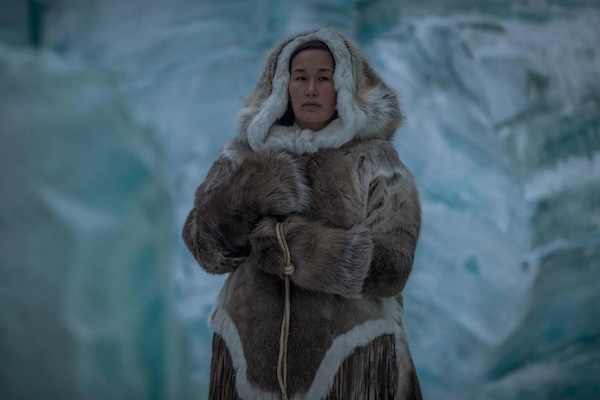
The crew finds an Inuit woman, who they dub Lady Silence, because she will not speak to them. Lady Silence is the daughter of a shaman whose job is to control the spirit of the Tuunbaq. Who or what Tuunbaq is, she doesn’t say. In the meantime, a polar bear (or some kind of creature) is picking off members of the crew. Of course, the true terror is not from the mysterious creature, but what people will do to one another.
The show really shines in its production design. The frigidity and desolation comes through the screen, and the claustrophobia aboard the ships is palpable. The creaking boards, the stretching ropes, the swinging oil lamps are all immediately evocative of the early Victorian era of exploration.
The tight writing and impeccable visuals are led by tremendous performances by the cast. The commanders are played by Ciaran Hinds, Tobias Menzies, and Jared Harris, and they truly embody the stoic Royal Navy. Watching their veneer crack as the expedition turns dire is a masterclass in acting. Similarly, the supporting cast of sailors and crew is a brilliant representation of the spectrum of human nature.
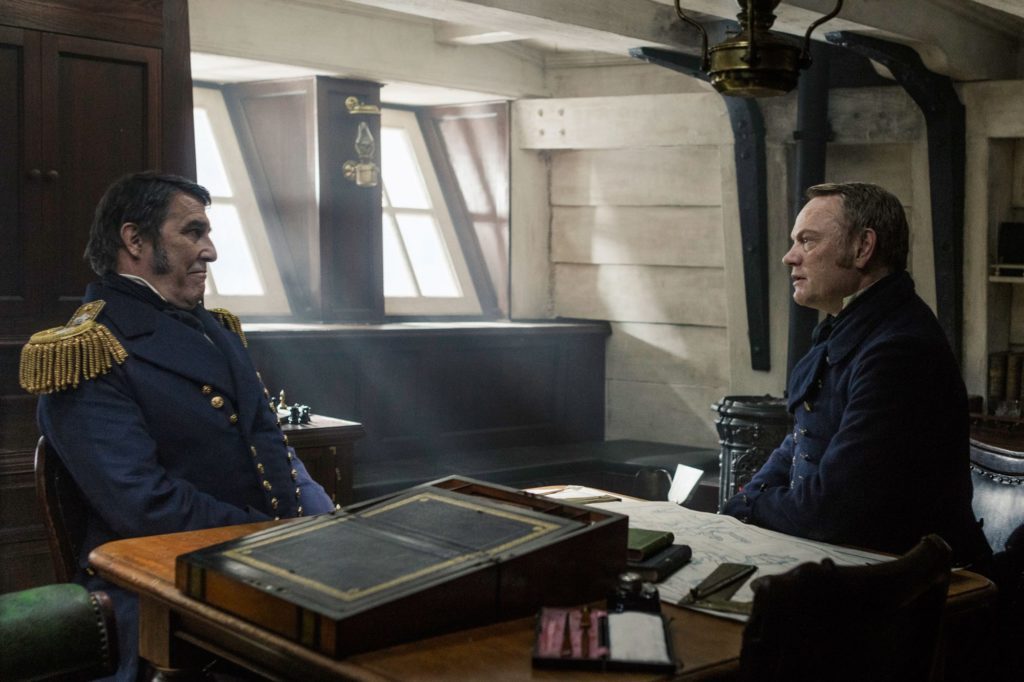
Perhaps naming one’s ships after Erebus, the ancient Greek god of the darkest region of the underworld and the personification of darkness itself, and a paralyzing, inhuman fear wasn’t the most forward looking plan.
Not for the faint of heart, the thoughtful, artful show does not hold back on the darker themes, but for those who enjoy psychological thrillers, with strong historic backgrounds, should take the frigid plunge into the Arctic deep and dare to face The Terror.
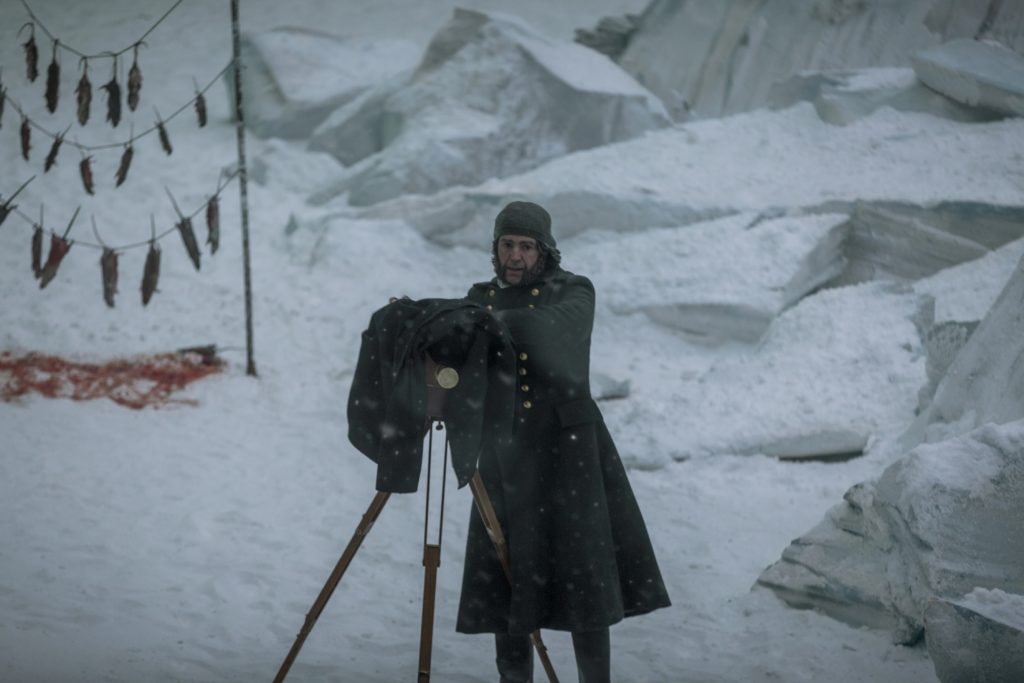
Learn more about the disappearance, and rediscovery of the HMS Terror and HMS Erebus here.
Originally written for DVD Netflix
